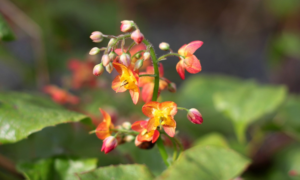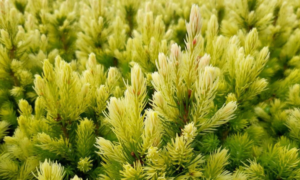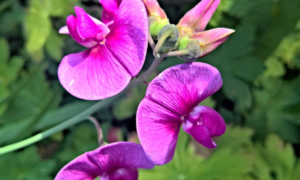We independently research, review, and recommend the best products. If you buy something through our links, we may earn a commission. Learn more.
Kentia Palms, also known as Howea forsteriana, are native to Lord Howe Island, a small island off the east coast of Australia. They make for a popular indoor plant due to their elegant and graceful appearance, and their ability to adapt well to indoor conditions. But even with the utmost attention, sometimes brown tips and yellow leaves occur — especially if you’re unsure how often to water it.
Here we’ve outlined several tips to care for a Kentia Palm, so yours can thrive for many years.
Contents
Kentai Palm Care Instructions
Kentia Palms prefer bright, indirect light but can also tolerate low light conditions. Place your plant in a location that receives indirect sunlight, such as near a window facing east or west. Avoid placing it in direct sunlight as this can cause the leaves to yellow and scorch.
The soil should be consistently moist, but be careful not to overwater the plant. Allow the top inch of soil to dry out before watering again. When watering, do it thoroughly until water flows out of the bottom of the pot. During the winter, the plant may need less frequent watering as it will be in a dormant period.
Fertilise your Kentia Palm once a month during the growing season (spring and summer) using a balanced liquid fertiliser. Reduce fertilisation to every two to three months during the winter.
Pruning
Pruning is not necessary for Kentia Palms, but if you decide to, make sure it’s in spring or summer.
To prune, simply remove any yellow or dead fronds with clean, sharp scissors. Avoid cutting into the crown of the plant as this can damage new growth.
Propagation
You can propagate Kentia Palms from seeds or by dividing offsets, which are small plants growing at the base of the mother plant.
To propagate a Kentai Palm from seeds:
- Get Kentia Palm seeds from a reputable source.
- Fill a seed tray or pots with a mixture of equal parts seed compost and perlite or vermiculite.
- Sow the seeds on the surface of the soil mixture and cover them lightly with a layer of compost or vermiculite.
- Water the seeds lightly and place the tray or pots in a warm, bright location.
- Keep the soil moist and wait for the seeds to germinate, which can take several months.
When the seedlings are large enough to handle, transplant them into individual pots filled with a well-draining potting mix.
To propagate a Kentai Palm by dividing offsets:
- Carefully remove the offset from the mother plant, being careful not to damage the roots.
- Plant the offset in a pot filled with a well-draining potting mix.
- Water the offset and place it in a bright, indirect light location.
- Care for the offset as you would a mature Kentia Palm.
Growing From Seeds
Growing Kentia Palms from seeds can be a slow process, as it takes several months for the seeds to germinate.
To increase the chances of success, use a seed tray or pots filled with a mixture of equal parts compost and perlite or vermiculite and place them in a warm, bright location.
Keep the soil moist and wait for the seeds to germinate. When the seedlings are large enough to handle, transplant them into individual pots filled with a well-draining potting mix.
Growing in Pots
You can grown Kentia Palms in pots or containers as long as they have good drainage. Use a well-draining potting mix, specifically formulated for palms or a mix of equal parts potting soil, perlite, and sand.
Choose a pot that is slightly larger than the current pot, as the plant will eventually outgrow its current container.
| Specification | Description |
|---|---|
| Scientific name | Howea forsteriana |
| Common names | Kentia Palm, Paradise Palm, Sentry Palm |
| Native region | Lord Howe Island, Australia |
| Hardiness zones | 10-11 (can be grown outdoors in parts of California, Florida, and Hawaii) |
| Light requirements | Bright, indirect light; can tolerate low light conditions |
| Water requirements | Consistently moist soil; allow top inch of soil to dry out before watering again |
| Fertilization requirements | Balanced liquid fertiliser once a month during the growing season (spring and summer); once every two to three months during the winter |
| Propagation methods | Seeds, dividing offsets |
| Potential pests and diseases | Mealybugs, spider mites (can be controlled with insecticidal soap or horticultural oil); root rot (prevent with well-draining soil) |
| Common issues | Yellowing leaves; Brown leaf tips; Drooping leaves |
Overwintering
If you live in a climate with freezing temperatures, you will need to bring your Kentia Palm indoors during the winter to protect it from the cold.
When moving the plant indoors, place it in a location with bright, indirect light and reduce watering.
Common Pests & Diseases
Kentia Palms are generally resistant to pests and diseases, but they are occasionally affected by mealybugs and spider mites. To control these pests, use an insecticidal soap or horticultural oil.
Overwatering can lead to root rot, which is often deadly for the plant. To prevent root rot, allow the top inch of soil to dry out before watering and use a well-draining potting mix.
Common Issues
Yellowing leaves can indicate over- or under-watering, or a deficiency in nutrients. Brown leaf tips may be caused by low humidity or too much direct sunlight.
If the leaves are drooping, it could be a sign of overwatering or underwatering. Make sure you are watering the plant consistently and aren’t allowing the soil to dry out completely or become waterlogged.
FAQ
How big do Kentia Palms get?
Kentia Palms can grow up to 10 feet tall, but they grow slowly, so it will take several years for them to reach this size.
Can Kentia Palms be grown outdoors?
Kentia Palms are native to a tropical climate and aren’t suitable for outdoor growth in most parts of the world. They can be grown outdoors in USDA hardiness zones 10 and 11, which includes parts of California, Florida, and Hawaii.
How do I know when to water my Kentia Palm?
To determine when to water your Kentia Palm, stick your finger about an inch into the soil. If the soil feels dry, it is time to water the plant. If the soil is still moist, wait a few more days before watering.
How often should I fertilize my Kentia Palm?
Fertilise your Kentia Palm once a month during the growing season (spring and summer) using a balanced liquid fertilizer. Reduce fertilisation to once every two to three months during the winter.
Can I propagate my Kentia Palm from a cutting?
It isn’t recommended to propagate Kentia Palms from cuttings as they don’t root easily. Instead, try propagating from seeds or dividing offsets.






